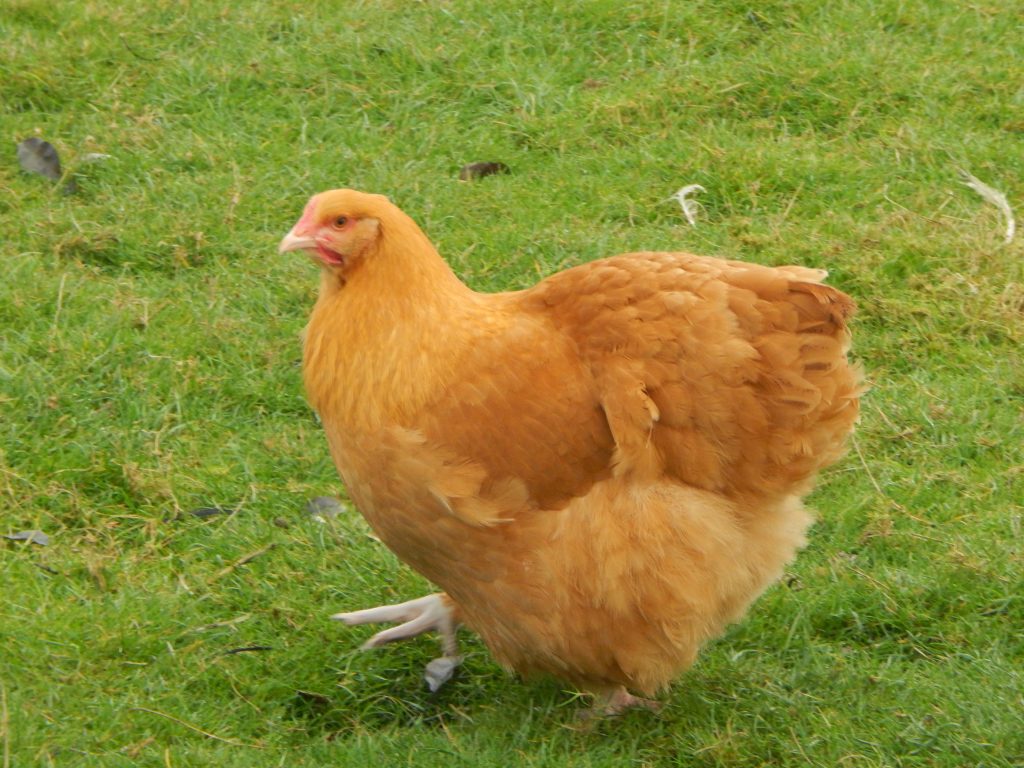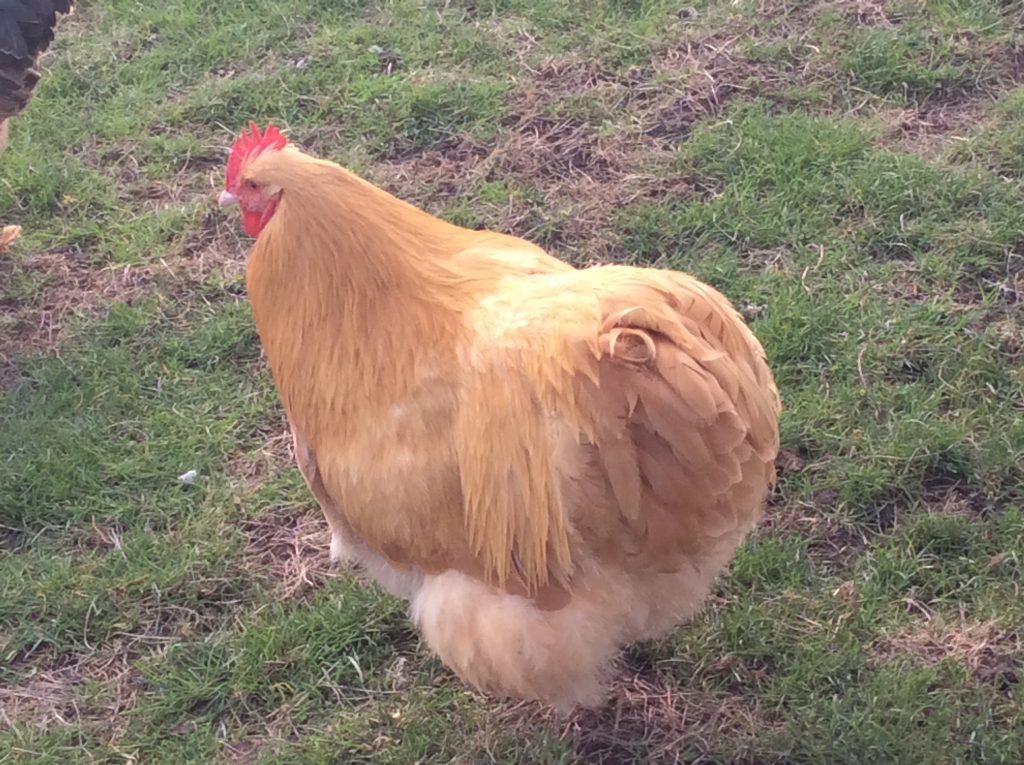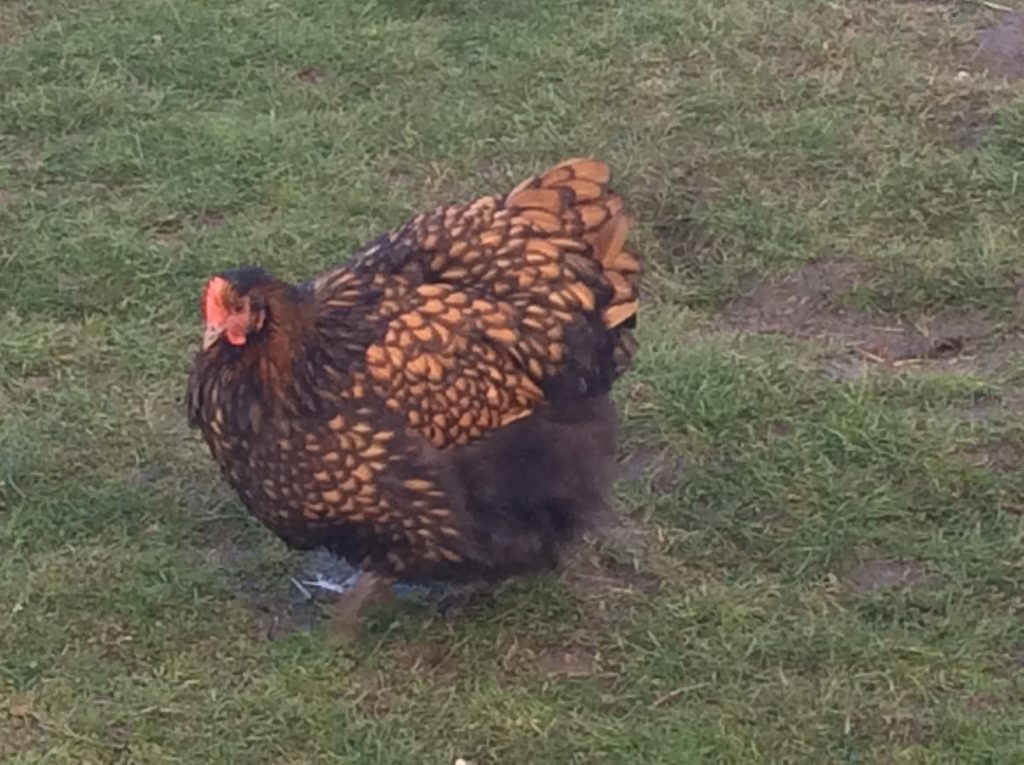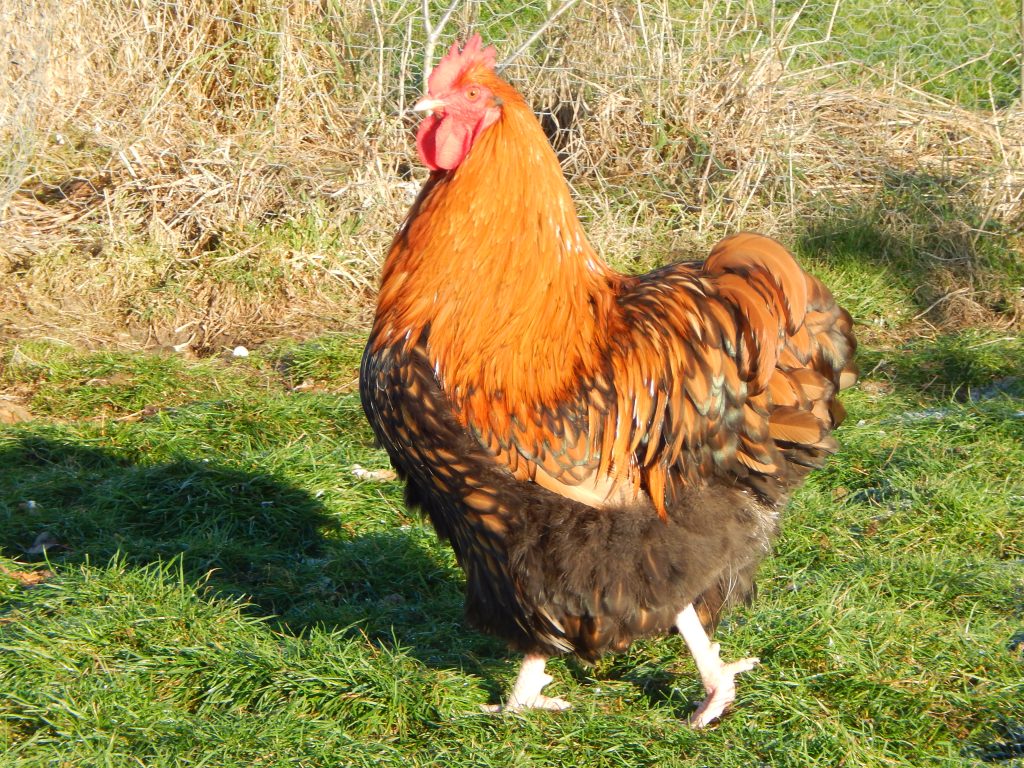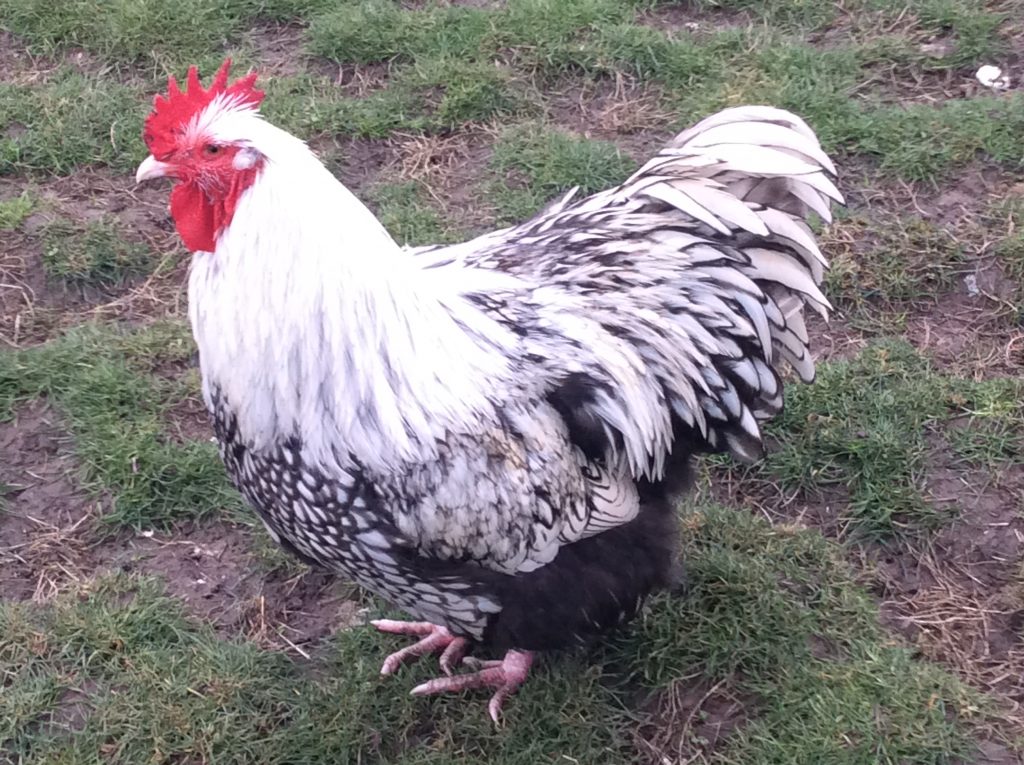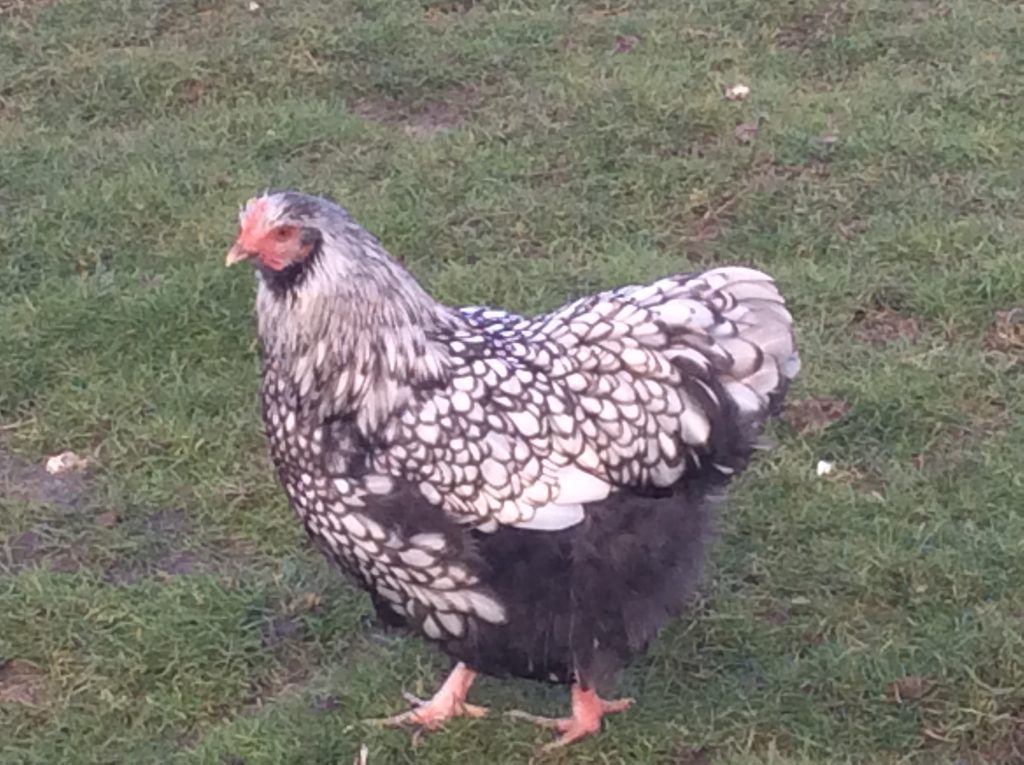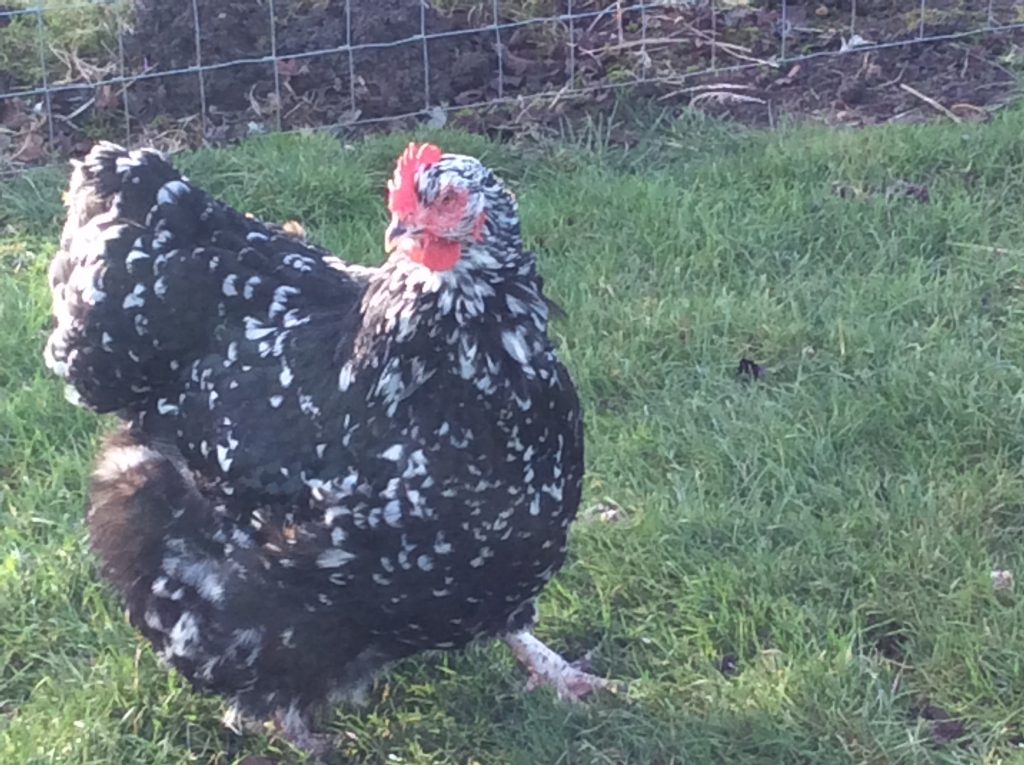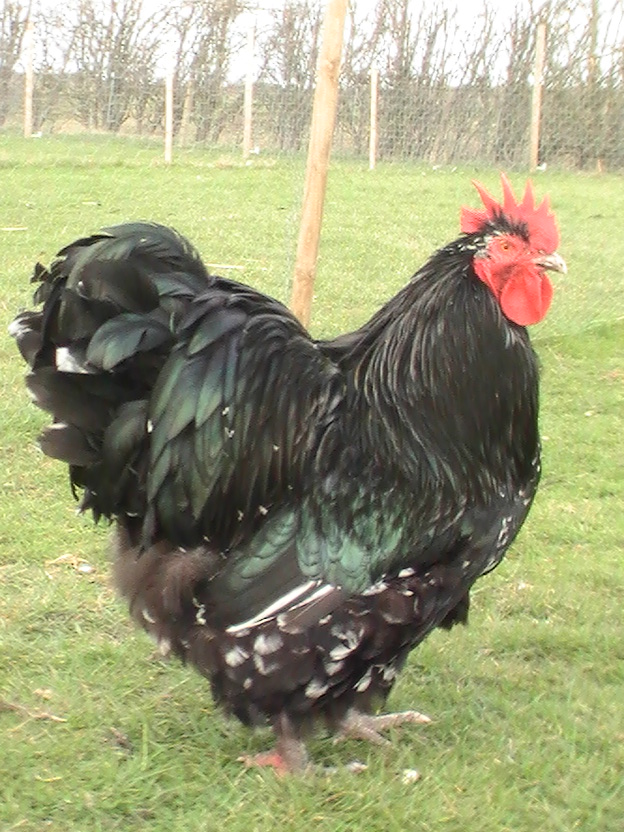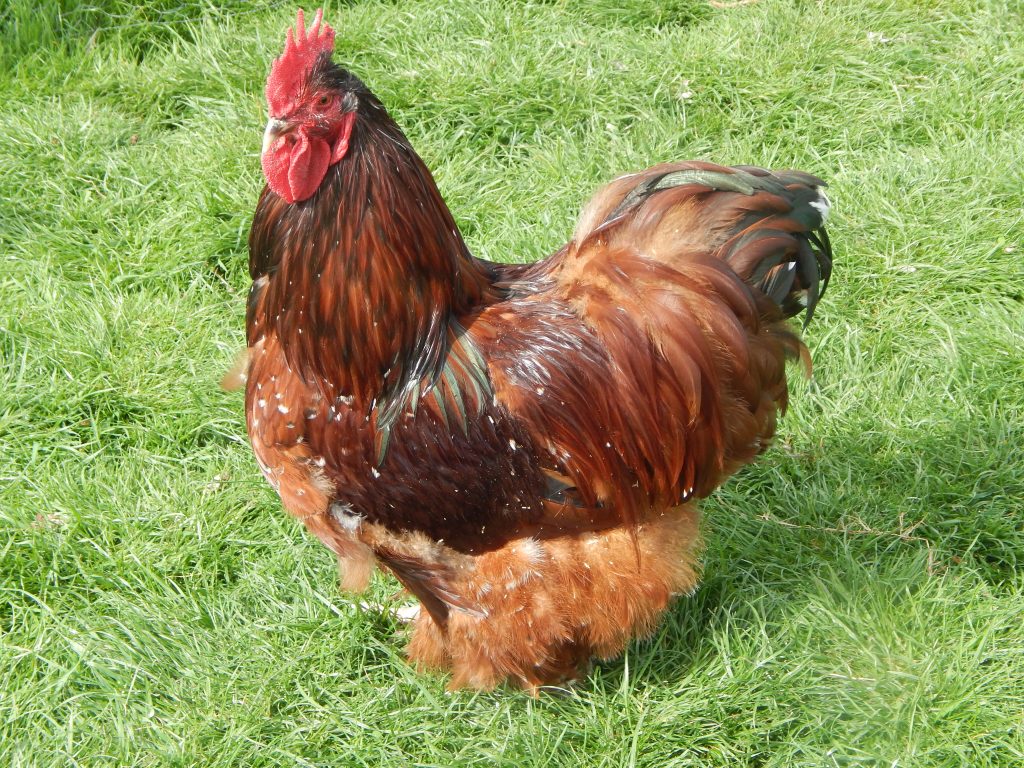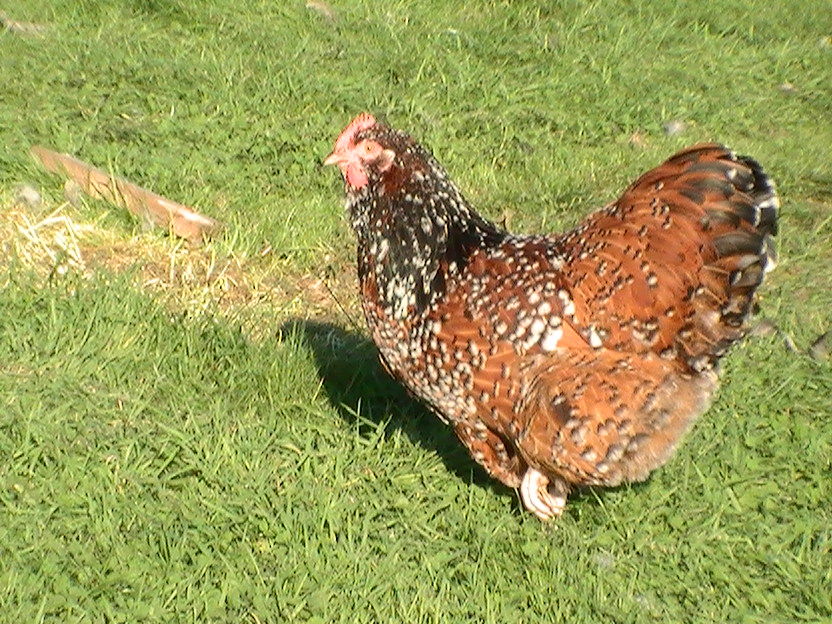The Orpington is one of the only breeds of poultry that has a recorded history of development. It was named after the town of Orpington in Kent where William Cook lived. William Cook, however, was born in St Neots, Cambridgeshire and moved to Kent in his late teens.
The first Orpington colour to be bred was the black Orpington by William Cook. It was introduced in 1886. The white Orpington was next in 1889. Soon after the Buff and Jubilee Orpingtons were introduced. William Cook died in 1904 and his daughter took over breeding Orpingtons. Between 1900 and 1910 the Spangled , cuckoo and Blue colours appeared.
Nowadays many colours have been bred into Orpingtons. Some, like the Silver Laced, are still work in progress.
The buff and Jubilee have still retained some excellent utility characteristics since they get to a large size and are not all feather for exhibition. The Orpington can lay very well, but it is variable between colours. Out of the colours we keep the Buff, Silver laced and Gold laced are the best layers. They are all calm placid birds and most are good broodies.
Buff Orpington
Orpingtons lay about 175 to 200 medium to large light-brown eggs a year. Our Buff Orpingtons generally, under the right conditions, lay better than their exhibition counterparts.
It was said that at one time Orpingtons were capable of laying as many as 340eggs per year. This decline in production was due to breeders selecting for looks over utility.
We have purposely selected our Buff Orpingtons for utility purposes. That said, they are still absolutely stunning birds and the friendliest of all our Orpingtons. They are very good garden birds since they are not serious at destroying a garden, unlike some other breeds!!
Gold Laced Orpington
They are a striking bird with beautiful distinct lacing. Gold Laced Orpingtons were originally created by Mr Jobst Veltheim. They were added to the German standard in 1972 and later in Holland. It was bred to be an excellent layer with good meat quality. Its large size and soft appearance together with its rich colour and gentle contours make it very attractive, and as such its popularity has grown as a show bird rather than a utility breed. We did not see the same fertility issues as in the Silver laced.
Silver Laced Orpington
These are very striking birds. They lay surprising well too! In our opinion they are hard to breed . They commonly have fertility issues. It is also hard to get to the required standard for them. We do succeed sometimes and have some for sale. However these birds are the ones that we have the fewest for sale most years. They are very variable in numbers reared.
Spangle or Black Mottled Orpington
These are very striking birds. They are very friendly and quite lazy for Orpingtons. They tend to get more white spots with every years moult. As such you have a bird that looks slightly different every year! They also, in our opinion, like more sheltered conditions than our other Orpingtons . That said ours do still free range very happily.
Jubilee Orpington
The jubilee was first introduced in 1987. It is believed to be a descendant of the speckled sussex, and probably the buff Orpington. However it is still uncertain as to exactly how it was made. The Jubilee was named to commemorate Queen Victoria’s diamond jubilee. The mahogany base with black spangles and white tips makes this a very desirable colour. It is thought that during the war it was wiped out in Germany as Hitler wanted all British breeds culled, and with the Jubilee having such a patriotic tie with Britain, these were not spared. Two different types of the colour variation, a darker mahogany ground colour which is the traditional kind, and a lighter more ‘ginger’ or buff ground colour known as the Diamond Jubilee, were both re-created in Germany after the war.
The feather pattern which makes the Jubilee, is a very complex colour, and maturing birds can take up to 18 months to complete their feather pattern.
Once lost the colour / feather pattern is virtually impossible to recreate. The only sensible outcross to a Jubilee is a Spangled. However this can only be used one in three generations otherwise the colour pattern will decline. This is a long term project if started and requires Spangled and Jubilees that have not been crossed with anything for five years.


